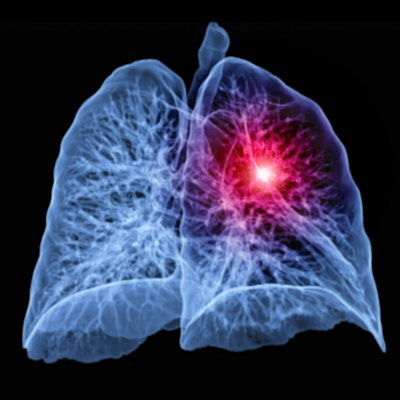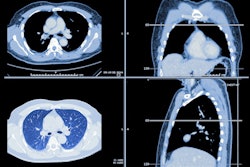
CT lung cancer screening of people based on their personal risk may be more cost-effective than the current strategy recommended by the U.S. Preventive Services Task Force (USPSTF), according to a study published February 6 in Annals of Internal Medicine.
A team led by Iakovos Toumazis, PhD, of the University of Texas MD Anderson Cancer Center in Houston, Texas, found that risk model-based lung cancer screening strategies, which select individuals based on personal risk, are more cost-effective than current USPSTF recommendations based solely on age and smoking history.
"Findings from this study could be considered as a potential guide for the development of cost-effective risk model-based lung cancer screening under various settings and availability of health care resources," said Toumazis, in a news release from the university.
Lung cancer is the leading cause of cancer death in the U.S. and the second most common cancer diagnosed annually, according to the American Cancer Society. The USPSTF currently recommends annual screening with low-dose CT in adults aged 50 to 80 years old who have a 20-pack-a-year smoking history and currently smoke or have quit within the past 15 years.
Conversely, risk model-based strategies use validated risk-prediction models to estimate lung cancer risk within a prespecified time horizon, based on a set of risk factors associated with the disease, the authors wrote.
In this comparative modeling analysis, the group used two validated risk calculator models with six-year risk thresholds set between 0.5% and 2.2%. Based on age, sex, and smoking-related risk predictors, one model estimated an individual's six-year probability of developing lung cancer, and the other predicted the probability of a person dying from lung cancer within six years.
Outcomes were calculated using metrics such as incremental cost-effectiveness ratios (ICER) and quality-adjusted life-years (QALY) to connect strategies with the highest health benefits. An ICER less than $100,000 was considered cost-effective.
Notably, a strategy using a 1.2% six-year risk threshold yielded the highest health benefit among cost-effective strategies per QALY gained, with an ICER of $94,659, the researchers found. Moreover, the 1.2% six-month risk strategy yielded a higher reduction in lung cancer mortality than the 2021 USPSTF recommendation (12.4% vs. 11.8%), while maintaining a similar level of screening coverage (21.7% vs. 22.6% people ever screened), they noted.
"While the current recommendations are cost-effective, our findings suggest that we can improve on these guidelines and provide more flexibility to include those most likely to benefit from lung cancer screening," Toumazis said.
To the best of their knowledge, this is the first study to comprehensively evaluate the cost-effectiveness of risk model-based lung cancer screening relative to the 2021 USPSTF recommendations, the researchers wrote. Ultimately, the study revealed that when QALYs gained from screening and the costs of screening, diagnostic, and treatment modalities are considered, then risk model-based screening strategies offer a substantially higher benefit, they wrote.
"Risk model-based screening is cost-effective under a wide range of risk thresholds, offers flexibility for implementation across different settings, and warrants further consideration," the group concluded.





















